Home page
» REGIONS
» Regional peculiarities
Regional peculiarities
Azerbaijan, the land of fire is rich and has an ancient history. A unique pretentious cultural heritage forming a part of the cultural treasure of the world has been created in the territory of Azerbaijan for thousands years. Every region has its peculiar features – ethical values, mode of life and rules. To know Azerbaijan one must start getting acquainted with these regions.
Baku – Absheron region 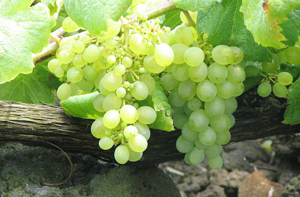 A part of historical monuments (Gobustan, Maiden Tower, Icheri Sheher etc.) existing in Azerbaijan and known all over the world is situated in this region.
Baku-Absheron region differs from the other regions in its carpet-making, art, art of music, meykhana, especially masters of mugham.
Baku-Absheron cuisine differs in its diversified and high quality dishes. Gutab (especially gutab made of camel meat), dushbara, khangal, gurza, khamirashi are well-known among them. The pilau made of mutton and mixture of chestnut and dried cherry-plum, chighirtma pilau with mixture of cooked chicken, egg and limon juice and other types of pilau are deemed the lovely dishes of citizens of Baku city. Kababs made of mutton, chicken and fish are well-known as well.
Sweets of Baku cuisine are of high quality. Here one can find pakhlava, shakarbura, goghal, sharbets, malt halva, etc. These sweets are traditionally baked in Novruz Bayram celebrated on the occasion of spring. Mashtagha settlement is famous for its tea with saffron.
In Baku women and men usually celebrate a wedding separately. A single man does not participate in women’s weddings.
Ganjabasar region 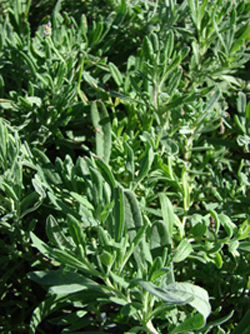 Sea-buckthorn, hayseed, willow, sumac, cotinus, yulun, mulberry, olmaz kol, pomegranate, hips, blackberry etc. are wide-spread in the region. Ganja is famous for its planes and tarragon. The state reserve of “Goygol” is the first in Azerbaijan. The art of “ashig” is well-known in the region. Ganjabasar is also well-known for its poets. Gazakh is one of the carpet-making centers. Few people still carry on the traditional handicraft.
When speaking about Ganja cuisine, we may cite such sweets as firni, pakhlava, zilviya, nazik, as well as Ganja dovga, as an example.
Ganja pakhlava is made usually on the eve of Novruz Bayram in different cities and regions of the republic, engagement and wedding ceremonies. Ganja pakhlava differs from the others made in other regions with its size and spices added to it. Ganja pakhlava is usually made in copper tray and cooked on the cinder and cut as rhombus in big pieces.
Ganja people discard old things in Novruz Bayram.
Ganjabasar wedding ceremonies are accompanied with zourna and saz. Ashigs tell tales and say poems.
Karabakh region  A number of monuments representing the ancient architecture and culture of Azerbaijani people is situated in Karabakh. Rich traditions accumulated in different fields of life activity by the citizens of the region made Karabakh popular long beyond its borders.
Horse-breeding and sheep-breeding are wide spread in cattle-breeding. Karabakh horse and Karabakh sheep species was breed by local selection method. These horses are well-known in Europe from ancient times.
Karabakh khanandas (singers) play an important role in the development of music culture of Azerbaijan. Karabakh folk singers were popular in the East in the past. Karabakh dialect had an influence on the development of literary language of Azerbaijan.
Karabakh is the land of rare plants included into the “Red Book”: Hirkan box – pirkal, Caucasus glanthus, Komarov camomile, Scorzonera pusilla Lomak, velvety rose, ordinary chestnut, Karabakh poppy, magpie althaea etc. Kharibulbul (Ophrys caucasica) which is deemed to be one of rare plants of the world grows only in Shusha, Karabakh.
In the past such types of dwellings as “garadam” (black roof) (“ev dami”, “torpag dam”), “baghdadi” and “taghband” are wide-spread in the region. The dishes and sweets of the region have great influence on the enrichment of Azerbaijan cuisine (Karabakh katasi, Barda nani etc.). The Karabakh school of carpet-making is famous all over the world. The carpets with diversified patterns – “Lambarani”, “Chalabi”, “Achma-Yumma”, “Baliq”, “Buynuz”, “Karabakh”, “Barda” and “Lachakturunj” are specially distinguished.
Karabakh is the cradle of Azerbaijan folk music, mugham and poetry. It is the native land of a number of famous musicians, poets, writers and popular singers.
“Kata” is a speciality of the Karabakh cuisine. The Karabakh cuisine includes such meals as “govurma” made of mutton and beef, gavly, dolma, yakhni, bozbash, khash, kallapacha, sajichi, roasted offal, soups and different pilaus. Roasted and boiled river fish are also popular here. Dried fruits are widely spread in the Karabakh cuisine. They are used in making khoshab, pilau, soup and meat dishes and served as dessert. Jad, gutab with meat, fasali, kata, shakarbura, pakhlava, guymag, halva, gurabiya, shorgogali, dovga, different kabab types etc. are cooked here.
The main difference of Karabakh wedding parties is that they pay a special attention to mugham (as in Baku and Shirvan). People participating in the wedding party prefer listening to mugham to dancing and entertaining.
The Bride does not come to a maghar (a large tent built for a wedding ceremony) in Karabakh weddings. Generally, the party is organized only for men, women come to maghar in the evening after the meal.
To take a thing from bride’s house is one of the traditions in Karabakh region. The “stolen” things are demonstrated to the people around after the wedding group goes to the groom’s house. The other names for this original tradition are “sheyogurlugu”, “xaspushlug”, “khakrizdama” (Aghdam, Fizuli, Shusha, Tartar), “chipitma” (Lachin, Jabrayil), “khirziliq” and “sirgat”. In some places the bride’s mother gives her daughter a pinch of ash instead of bread.
Nakhchivan region  Almond, east oak, beech, nut, willow, birch, wild peach and a number of herbal plants are the most wide-spread plants in Nakhchivan region. Ordubad is especially famous for its apricot and lemon.
Hot summer and warm autumn gives an opportunity to cultivate high quality grape sorts such as Bayan-Shiraz, Tabrizi and Shirazi. Gardening is also well developed here. Quince, cherry-plum, peach, apricot and almond are cultivated here.
The animal world of Nakhchivan is rich. The most wide-spread sheep species are called balbas. Balbas sheep differ in their productivity and white, soft wool. The wool of the sheep is widely used in carpet-making.
There are a lot of mineral fields in the autonomous republic. Famous Badamli, Sirab, Vaykhir, Nagajir and Giziljir mineral springs are found here. Nakhchivan is famous for its salt as well. This salt is used not only in kitchen but also for treatment purposes.
There are a lot of little lakes near the mineral water springs. One of the famous lakes is Batabat, located in 2424 meter above sea level between picturesque alpine meadows.
Since the old times decorative-applied art types are wide-spread in Nakhchivan. The most famous of them are silk worm breeding, carpet-making, silver-thread working, patterned waving, metal-styling and carving on wood.
Nakhchivan has a rich cuisine and high hospitality customs.
It is impossible to imagine the meal without bread in Azerbaijan, as well as in Nakhchivan. So, you can find here high quality bread: tandir lavash, galin, dastana, komba etc.
Parcha bozbash, kufta bozbash, cholmak piti, bozartma, chighirtma, dolma, kabab, khash, arishta, umaj, etc. constitute the Nakhchivan cuisine. The main dish here is pilau. The garnish for pilau varies and is made using mutton, beef, chicken, dessert (nut, hazelnut, and chestnut), dried fruits (apricot, plum, cherry-plum etc.)
Nakhchivan cuisine is famous for its batter dishes such as arishta pilau, umaj pilau, halvas made by wheat and rice flour, khashil and guymag.
Sudashi, bulama, gatigashi, gatiglama, dovga, ayranashi, gurutashi etc. made by milk and milk products have special place in Nakhchivan cuisine.
Nakhchivan cuisine is famous for its different sherbets, juices, marinade and salads along with dishes. The peculiar sweets of Nakhchivan - Ordubad fried eggs and pakhlava, shakarbura, various kata, bukma etc. are also wide-spread. Ordubad region differs for some peculiarities. It is known with nut, flower and aubergine jams, as well as dishes such as mash soup, alana-basdig, lavash and dried fruits.
Mash soup is one of the most famous dishes of Ordubad region. Mash bean and fresh bean (green bean) are mostly used in Ordubad. These dishes are cooked with fresh mutton in summer and with govurma in winter. Govurma is the mutton cooked in its fat. Fried mutton is put to kettle or buckets in its fat and stored in a cool place. Govurma is added to both dry and fluid meals. It tastes extraordinarily and deliciously.
Wedding ceremonies in Nakhchivan differs in some features. Young girls perform “hakhishta” in bride’s house in engagement and wedding ceremonies.
Two groups in two rows consisting of 8-12 participants stay opposite taking each other’s hand. Then one of the participants begins to tell bayati ending with the word “hakhishta”. The others repeat this word passing the opposite row and then back by clapping hands and dancing. He who cannot tell the bayati comes forward and has to dance on one leg by jumping.
Shirvan region 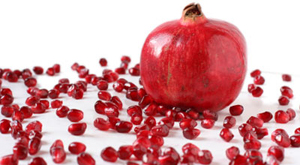 Shirvan region, a historical region of Azerbaijan is situated in the north-west and south-east foothills of Great Caucasus Mountains. One of the powerful and ancient states of Azerbaijan - Shirvanshahs, the capital of which was Shamakhi existed in this territory till the end of XVI century. Shirvan region is often called as flower garden, i.e. parterre, tulip-garden and meadow.
8% of the territory is covered by forests. Ismayilli and Pirgulu state reserves were created here to preserve rare flora and fauna.
Goychay is considered the land of pomegranate. Furthermore, there are grape sorts that are cultivated only in this region. Spice plants are grown in Ismayilli region.
Ulu duzu, Bulovdash, Sharadil, Dadagunash and Gonagkand villages differ specially in their cool springs, rich natural beauty, flora and fauna with various species.
The region is rich with mineral waters used for treatment and as a health resort. “Chukhuryurd” waters in Chukhuryurd village of Shamakhi region, “Namazgah” waters in Namazgah village of Ismayilli region are more limpid, scentless and colorless. These waters contain the type of precious carbonate. “Bado” waters of Ismayilli region are sanative and belong to chloride hydro carbonate – sodium type.
The Shirvan school of carpet-making is famous for its beautiful carpets. The carpets knitted in Shamakhi, Maraza, Aghsu belong to this school. Applied art is widespread in Ismayilli. Lahij village of the region is considered the land of tinning and brazier. Generally, this area was one of the centers of brazier and weapon production of Azerbaijan in XVIII – XIX centuries. Cans, satil, sarnij, trays, sarpuj, guyum, colanders, skummers, bowls, basins, pans, lamps and other products made of copper and decorated with intricate and delicate ornamental patterns by Lahij masters are very famous in Middle Asia, Dagestan, Georgia, Iran, Turkey and other places.
“Shamakhi mutakka” made of dough is very famous. Ismayilli is mainly famous for its cheese and honey.
Guba- Khachmaz region 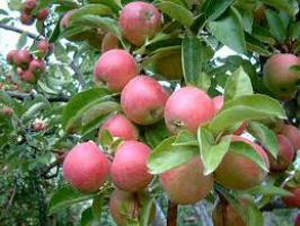 The region called Guba-Khachmaz is the area situated in north-east of Azerbaijan, in the north from Baku and historical location of Guba khanate.
The growth of popularity of the region is related to different vegetables and greeneries growing here during the whole summer, as well as early in autumn. A lot of herbals also grow here. Timothy, savage raspberry, haw, juniper, celandine, bittersweet, St John\'s wort, plantain, althaea, gandalash, dalibang and other valuable herbals grow in mountain forests and meadows. A lot of fruit types are cultivated in the region by the method of local selection. We can cite “Cibir apple”, “Jirhaji apple”, “Shirvan gozali”, “Mehdigulu savage apple”, “Winter snow peach”, “Ispik peach”, “pomegranate peach”, “Abasbayi”, “Summer snow peach”, “Sarcha abud peach” etc. as an example.
Carpet-making is wide-spread in Guba. The most magnificent compositions of Guba carpets are “Gadim Minara”, “Gimil”, “Alpan”, “Gollu-chichi”, “Pirabadil”, “Hajigayib”, “Giriz”, “Jek” etc.
Un-fleecy (dry) and fleecy (fleshy) carpets are wide-spread in the region. “Sumakh” which is considered un-fleecy one is knitted mainly in Gusar. In the past years rope production and the profession of pottery developed. Wood carving and the profession of charcoal-dealer are other art types.
This region is rich with fresh fish and other food stuffs. “Guba tikhmasi” is the most famous dish of its cuisine. One of the famous dishes is “Halimashi”. This dish is made of wheat and meat. It is served with butter and cooked generally in winter.
Different ethic nations live in this area. The customs and traditions of the nations are similar. In some villages in Guba and Gusar the most distinguished tradition is to give honey to a bride on the wedding day of. This is considered to be a sign of gift.
Lankaran region 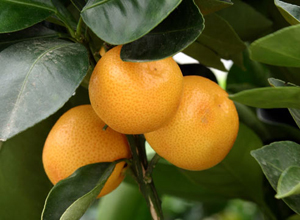 The favorable geographical situation of this region attracted people from time immemorial. Lankaran is a subtropical area that has the most fascinating nature, unique flora and is known as the place where rare birds and animals inhabitate. The region which is deemed to be the land of long lived people is world-wide famous for its generous and hospitable people, rich cultural and historical traditions, unmatched cuisine and folk art.
The region is the only area in the republic where zebun are cultivated. Different rice types such as anbarbu, akula, chilayi, reyhani, white chila, red chila, beybu, mazandarani, etc. are cultivated in this region in the old times. Along with rice you can find here paddy subtropical fruits such as feijoa, lemon, mandarin and japan date.
Dishes made of rice and fish rank high amid regional dishes. Pilaus of various types (“dashma -pilau”, “suzma-pilau”, “pumpkin-pilau” etc.) and various lavangi (fish lavangi, chicken lavangi) are wide-spread here.
The craftsmanship, including pottery and specially the profession of bast mat weaver (a special cane is used) are the most developed fields.
There are various wedding rituals. Two members from groom’s and girl’s family invite people to the wedding ceremony door-by-door before the wedding day. The persons invited to the wedding ceremony give a gift to them.
The engagement ring is placed in the mouth of fish placed in a tray in the engagement ceremonies in Lankaran. This means wishing abundance, successful marriage, and longevity. The other name of the khoncha is “nishanbakhti”.
A day before the wedding day a ceremony called “Hirdaboy” is organized. All things brought by groom’s family are demonstrated to all the guests. The bride fastens on all the adornments and other jewelry presented to her are collected in a vase filled with water. According to the belief, any single girl who drinks this water will be the next to marry.
After 3 days of wedding, a ceremony called “uzachikhdi” (appearance of the bride) is organized. In the very day the bride’s sisters and friends bring her their mother’s present and all the things belonged to the bride at her father’s place except shoes. Then they inquire about the bride and tell about the bride to her mother.
When bride enters to the groom’s house honey is brought and bride’s hands is put into it. The girl spreads the honeyed hands to the top of entry door.
Dowry is given in a special form in this area.
Mothers in Lankaran begin to prepare dowry when their daughters are 10-11 years old. When her daughter is betrothed, the priority issue in the family is to buy dowry. After bride’s wedding and before groom’s wedding all the relatives come to the bride’s house in a fixed day to an organized party and everybody brings some things for dowry.
To give dowry in Lankaran is little different. Big basins, big kettles and large basins used in wedding and other ceremonies, 5 or 6 set janamaz are given to a bride. Besides, if there is an old person in the groom’s house, the small mattress and jug made of copper are presented to them.
The dowry can also include cattle, sheep, horse, domestic birds – goose, duck, hens and chicken.
Shaki-Zagatala region 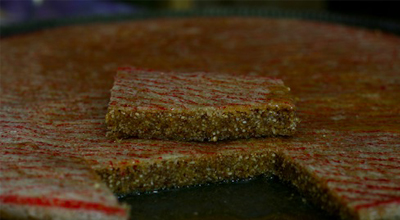 Shaki-Zagatala region locates in north-west part of Azerbaijan. Balakan, Gakh, Gabala, Oghuz, Shaki, Zagatala are the part of the region.
There are a number of architectural monuments, ancient towers, mosques, tombs and karvansaras here.
The sense of humor of people in this region is very high. Shaki is called as “the land of funny stories”.
Flora and fauna of Shaki and Zagatala region is rich and various. There are a lot of rivers and waterfalls here. At the same time the region is famous for its nuts, hazelnuts, chestnut, apple, raspberry, strawberry and some herbals.
Shaki- Zagatala region is known for its very rich cuisine. Shaki is famous for its Shaki pitisi, Shaki halvasi, Shaki pakhlavasi and sweets.
The dishes are prepared to a guest according to season. In Shaki they lay a tablecloth in accordance with the season. Shaki people make pilau according to season as well. They make pilau with minced-meat in winter, with funnel in summer and with chighirtma in autumn.
Regional dishes of Gakh, Balakan and Zagatala regions differ from other regions of Azerbaijan, including Shaki. People used to prepare “dolma” or jerked meat to store meat in winter. “Sulhullu”, “sikhma” etc. are specific dishes of these regions. Gabala cuisine differs for its pickles. White cucumber, medlar and cherry-plum pickles decorating the meals concern to this region.
Traditional domestic professions such as carpet-making, wood and metal carving, silkworm breeding, jeweller\'s art, making pottery items are mostly developed from time immemorial. The Shaki silk and silk kerchief is popular not only in the East, but also in Europe.
Wedding rituals of this region slightly differ in peculiarities. In Shaki-Zagatala region, for instance, both groom and bride have close friends sitting next to them. They must be single. According to the tradition, before the meeting with the groom after the wedding, only these friends may contact with the groom in the wedding room and walk around the gardens. After the wedding ceremony is over, the bride’s and groom’s family give them presents to thank them. Their other names are “bayyani”, “vazirs”, “yanchilar” (in Shaki), “saggals”. There are called “saghdosh-soldosh” as well.
As some ethic nations live in Balakan and Zagatala regions, there are differences in traditions. For instance, in Balakan the bride is carried to the house before entering to the maghar and mother-in-law make her walk around the lamp three times. Then honey is brought and bride and mother-in-law feed each other with the honey. This is deemed to be a sign of sweetness. Then the bride and the mother-in-law pull bread to know whose word will be the final at home. That’s to say the bride takes a part of the bread and the mother-in-law the other part and begin to pull. He who can pull out a bigger part of bread, his word will be final. Brides usually pull out a little as the sign of respect.
In other regions the brides do not appear within 3 days. The day after wedding a ceremony called “yumru toy” is organized. All relative gather together, bride gives tea to all the relatives and guests and put sweets in the saucer.
Kalbajar-Lachin region 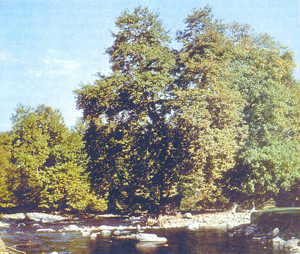 The region is rich with Kalbajar Alban monuments. Ancient Alban monuments located here are “Lachingaya”, “Lev”, “Ulukhan”, “Galaboynu”, “Jomard” etc. The rocks paintings in “Soltan Heydar”, “Gurbaghali chay”, “Turshsu”, “Aychingilli”, “Galingayasi”, “Boyukdavagozu”, “Sarchali” and other places of the territory of Kalbajar proves not only Kalbajar but also Azerbaijan lands as a whole to be an ancient dwelling of old people.
As Kalbajar-Lachin region is mountainous, it has rich nature. Zangilan region in this area is famous for its plane trees. Beautiful telegiya, agajvari findig, ayi findigi, Araz oak, Shoranyer allium victorialis, Caucasus winter orchid, East plane tree are not only rare plants of the Caucasus but also Azerbaijan.
The region is famous for its rich natural resources. There are gold fields and mineral waters in Kalbajar. Famous Turshsu, Istisu are located here. There are mineral water springs in Lachin region called Turshsu, as well.
Carpet-making, pottery, wood and metal carving are wide-spread in the region.
Aran region 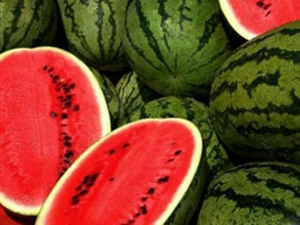 This region is one of the ancient, abundant and beautiful regions of Azerbaijan.
Grain, cotton, water-melon (Sabirabad is more famous), melon (specially in Kurdamir), quince (especially in Aghdash), rice and other vegetables are cultivated in this region of Azerbaijan. Sugar-beet is cultivated in Imishli region.
There are a lot of signs that prove the existence of different professions such as knitting, silk worm breeding, carpet-making, production of ceramic items, wood and metal carving developed in this region from old times.
Furthermore, beautiful and colorful fabrics are knitted and carpets, weapons, labor equipment, beautiful ceramic bowls, decorative things made of various metals, beautiful glass cups, jugs, goblets and other products manufactured in Barda, Yevlakh and Tartar.
Majority of Azerbaijani dishes are cooked here. The people use mainly meat and chicken meat. Fish dishes are wide-spread in the regions located on the banks of the river. The people usually cook fish soup and cutlet.
There are common wedding rituals peculiar to Azerbaijan here. But there are rather different traditions as well. For instance, the dowry of the bride is prepared by groom’s family in Aghdash.
|
